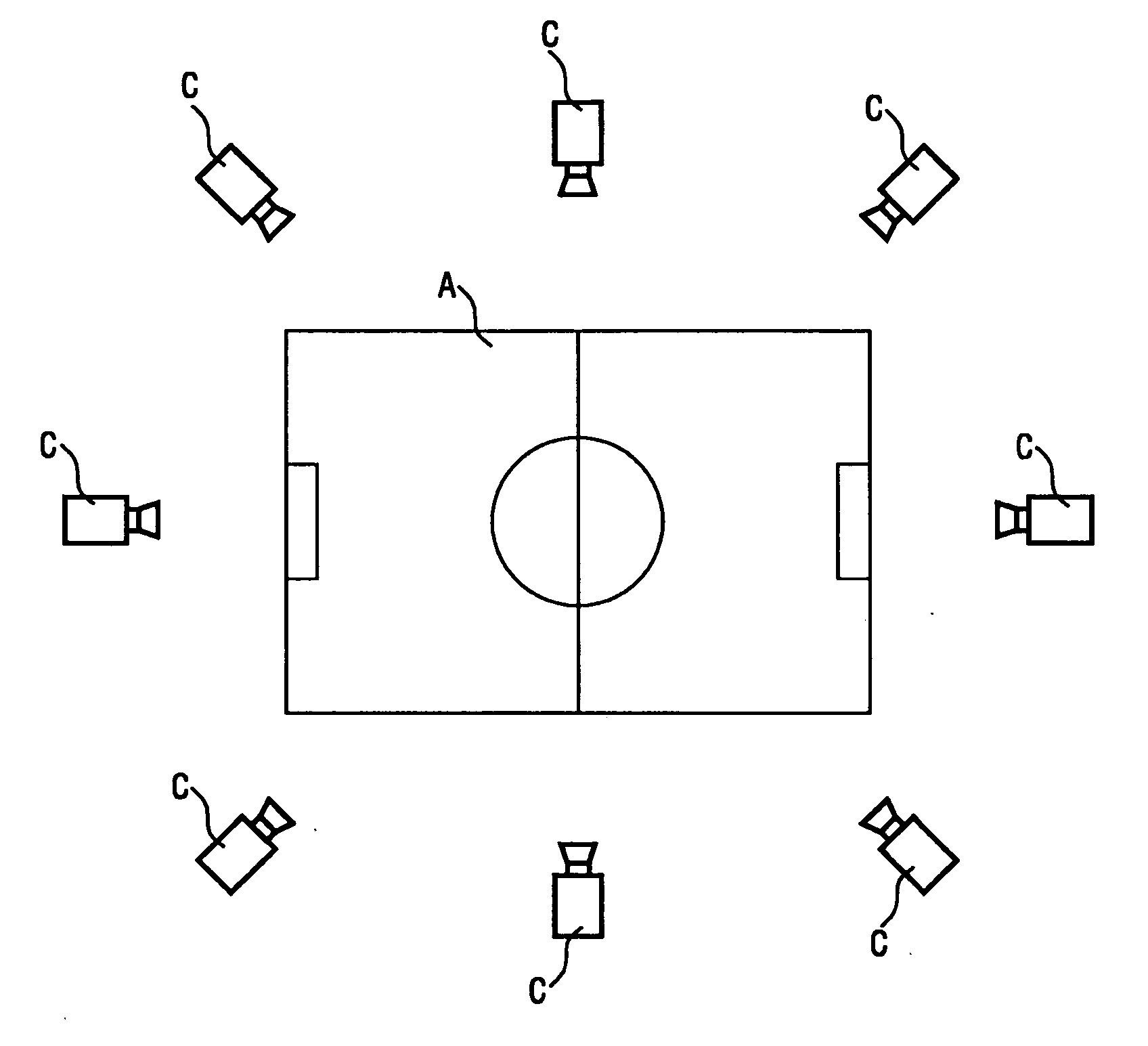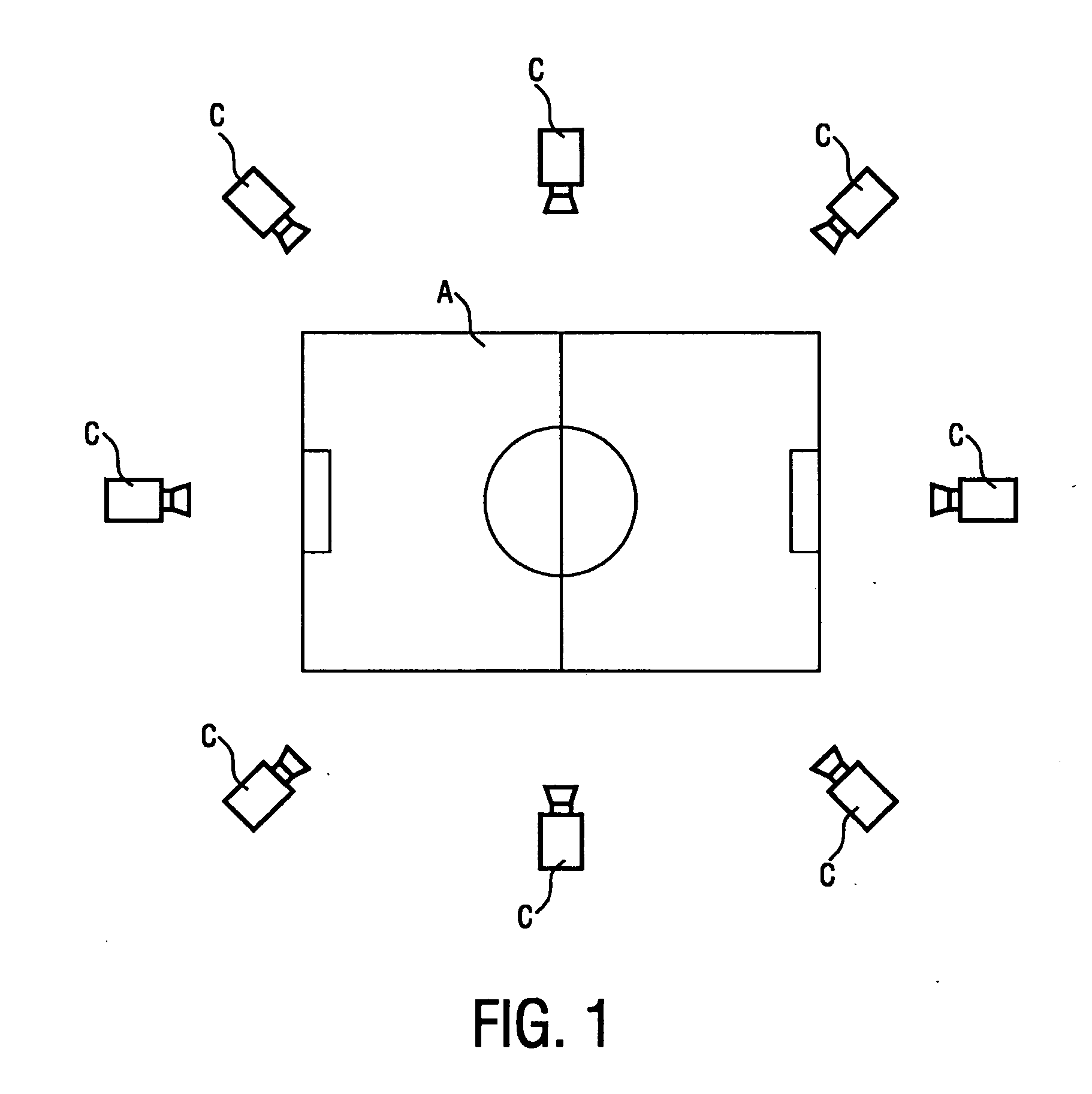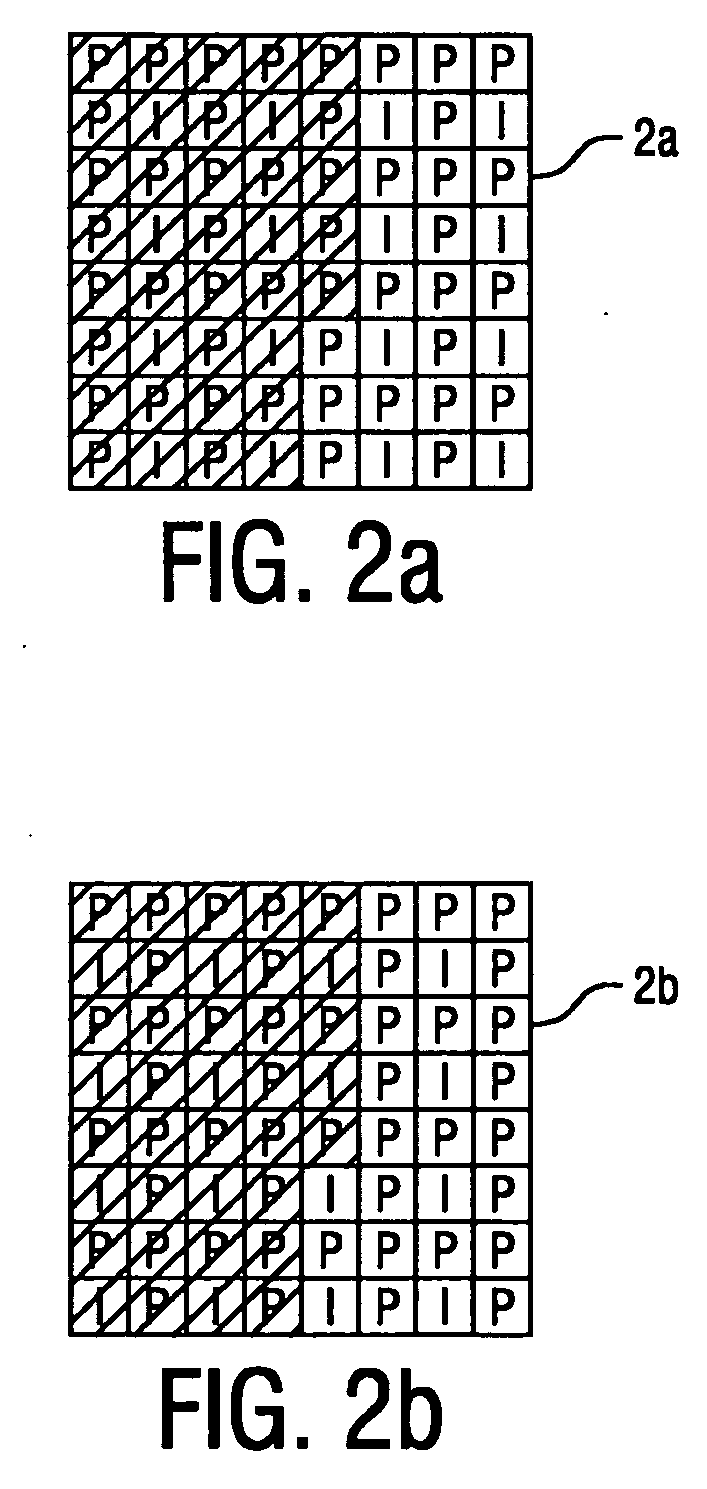Method of determining an image distribution for a light field data structure
a light field data and distribution method technology, applied in the field of determining the distribution of images for light field data structures, can solve the problems of loss of image quality, state-of-the-art techniques of light-field data compression, and inability to adapt to such considerations, and achieves the effects of low computational effort, high quality, and low cos
- Summary
- Abstract
- Description
- Claims
- Application Information
AI Technical Summary
Benefits of technology
Problems solved by technology
Method used
Image
Examples
Embodiment Construction
[0031]In the diagrams, like numbers refer to like objects throughout. Objects in the diagrams are not necessarily drawn to scale.
[0032]FIG. 1 shows, in a schematic representation, one type of camera arrangement for the purpose of collecting or capturing images for a three-dimensional video application. Here, the cameras are arranged about a scene. As already mentioned in the introduction, only a few cameras are shown here. In reality, a much greater number of cameras would be implemented to collect images for obtaining light-field data structures. Images captured by the cameras are combined as described above to give a sequence of light-field data structures which can be used at a later point in time to render the scene from different points of view.
[0033]Images are ideally captured by the cameras in a synchronised manner. For example, sixty-four images captured at a single instant by an arrangement of sixty-four cameras can be arranged virtually as an 8×8 array. After compression o...
PUM
 Login to View More
Login to View More Abstract
Description
Claims
Application Information
 Login to View More
Login to View More - R&D
- Intellectual Property
- Life Sciences
- Materials
- Tech Scout
- Unparalleled Data Quality
- Higher Quality Content
- 60% Fewer Hallucinations
Browse by: Latest US Patents, China's latest patents, Technical Efficacy Thesaurus, Application Domain, Technology Topic, Popular Technical Reports.
© 2025 PatSnap. All rights reserved.Legal|Privacy policy|Modern Slavery Act Transparency Statement|Sitemap|About US| Contact US: help@patsnap.com



